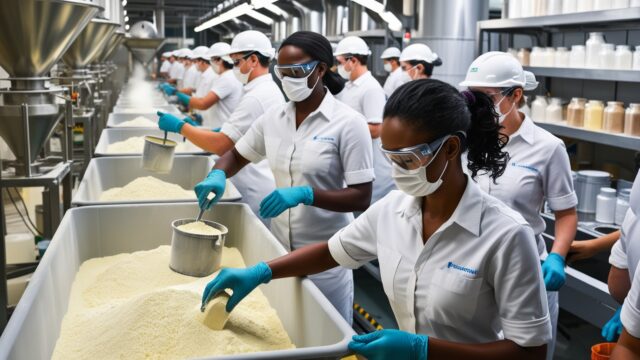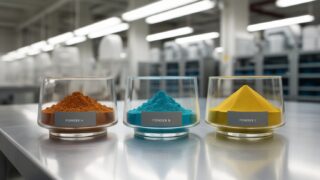In Europe, the manufacturing industry is under increasing pressure to prioritize environmental considerations and improve energy efficiency. Especially with the stringent environmental regulations of the European Union (EU) and growing interest in sustainability, energy-saving measures are essential. In this context, the role of powder feeders in manufacturing processes is gaining attention. Powder feeders are indispensable equipment in various industries, and the latest technologies allow for highly accurate feeding while minimizing energy consumption.
1.The Need for Energy Efficiency
The push for energy consumption reduction in Europe is mainly driven by environmental protection concerns. With initiatives like the EU’s “Green Deal” and national CO2 emission reduction targets, manufacturers are compelled to adopt energy-efficient equipment. Furthermore, rising energy costs make operational cost reductions a critical issue for manufacturers. In processes involving powders, the energy consumption of feeders can significantly affect overall efficiency, making the adoption of energy-efficient powder feeders essential.
2.Improving Energy Efficiency in Powder Feeders
Traditional powder feeders consumed significant amounts of energy to achieve high-precision feeding. However, recent technological innovations have led to the development of more energy-efficient machines. Today’s powder feeders are designed to minimize energy consumption through optimized motors and friction-reducing structural designs. Additionally, by using inverter controls, optimal energy usage can be achieved based on the required feed rate, allowing both energy savings and high-precision feeding.
3.Balancing Precision and Energy Efficiency
For powder feeders, both energy efficiency and feeding precision are crucial. In industries like food, pharmaceuticals, and chemicals, where precise feeding is required, stable and accurate supply of materials directly impacts product quality. Seiwa Giken’s powder feeders are designed to deliver high-precision feeding while minimizing energy consumption. This results in reduced energy waste and ensures that powders are supplied with the necessary accuracy, contributing to lower operational costs.
4.Case Studies of Implementation in European Manufacturing
In Europe, the introduction of energy-efficient powder feeders is advancing, particularly in sectors like food and chemical manufacturing, where energy savings are a high priority. For example, a pharmaceutical company in Germany successfully reduced the energy consumption of its production line by 20% while improving feeding accuracy by 15% by adopting a powder feeder from a well-known manufacturer. These cases highlight how energy-efficient powder feeders can become a major competitive advantage for companies.
5.Moving Towards a Sustainable Future
As energy-saving and environmental considerations become increasingly important in European manufacturing, powder feeders are expected to play a significant role in improving energy efficiency. By utilizing innovative technologies offered by companies like Seiwa Giken, European manufacturers can take a step toward a more sustainable future.
6.Conclusion
To meet the energy-saving needs of European manufacturing, the latest powder feeders achieve a balance between energy efficiency and feeding precision. With the demand for energy-saving powder feeders expected to rise due to the focus on reducing energy costs and protecting the environment, Seiwa Giken’s products are poised to become a key solution in the European market.






